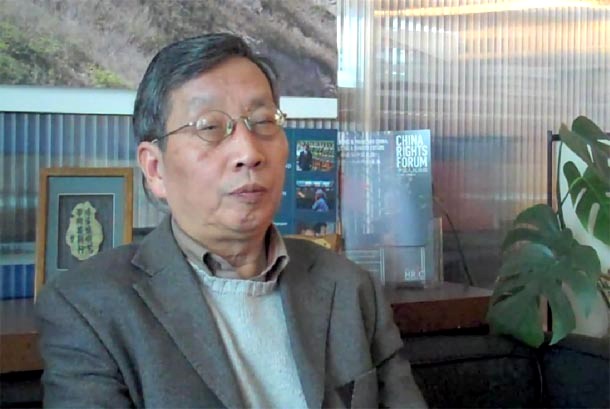 Dharamshala: Human Rights in China (HRIC), a non-governmental organization of scholars and activist focusing on human rights issues, have interviewed famous Chinese writer, critic, and publisher Hu Ping on Tibetans self-immolation acts as a form of non-violent resistance in regards to historical and religious context.
Dharamshala: Human Rights in China (HRIC), a non-governmental organization of scholars and activist focusing on human rights issues, have interviewed famous Chinese writer, critic, and publisher Hu Ping on Tibetans self-immolation acts as a form of non-violent resistance in regards to historical and religious context.
The number of self-immolations has increased in the last few years in Tibet; moreover, the Chinese authorities blame the exiled Tibetan government and the Dalai Lama for not trying to stop these suicides. They are accused of attempting to turn Buddhism into a religion of self-immolation and of violating the sanctity of life.
This claim was denied by Hu Ping who also presented a number of historical protesting events that involved self-sacrifice despite the religious classifications. Such examples included Thich Quang Duc, a Vietnamese Buddhist monk, who burned himself in protest of the persecution of Buddhist by the Ngo Dinh Diem government in 1963; monk Laingqing, during the Cultural Revolution in China in 1966, self-immolated in order to avoid the destruction of Famen Temple. Consequently, self-sacrifices are not new to the world.
Although some people and the Chinese authorities might consider self-immolation action as being violent, and while "Buddhism opposes killing and suicide, it does not oppose dying for a just cause, or scarifying oneself for one's faith or ideal", said Hu Ping. This action is considered as non-violent since the violence is inflicted on oneself and does not physically harm others.
Some of the self-immolation acts were conducted by the protesters themselves, while others had the help of their families, friends or members of their group. The ‘assistants' aid in taking photos, filming the actual self-immolation act and showing and spreading the news. As in the case of Thich Quang Duc's sacrifice, other members of the monastery and even a foreign journalist were informed of the upcoming event. Monks helped to set Duc on fire and when the police arrived at the incident, "more than 300 monks, who had previously marched in protest there, formed a circle around Duc to prevent the police from getting to him", explained Hu Ping. Undoubtedly, this act was prearranged and carefully prepared for.
There is no doubt that family, friends and other group members feel intense emotions, however, according to Hu, "they not only understand the act of self-immolation and self-sacrifice very well, but are willing provide assistance". The assistance is required to get the desired impact and spread the information. The provided help, as well as the self-immolation act, are not a crime and should not be considered as one.
Last but not least, self-sacrifice should not be looked at as a sign of hopelessness. If one considers suicide as the way to reach heaven, the person would possibly choose easier and less painful way rather that experiencing extremely excruciating pain through self-immolation which is usually performed in a public. It is always prepared and thought well throughout and generally is not an impulse decision.
"It thus demonstrates the actor's strong resolve to convey a message, and to let people understand his or her situation in order to have an impact on public opinion. So may self-immolations embody a powerful, intense meaning of non-violent resistance", finishing the interview said Hu Ping.


![Tibet has a rich history as a sovereign nation until the 1950s when it was invaded by China. [Photo: File]](/images/stories/Pics-2024/March/Tibet-Nation-1940s.jpg#joomlaImage://local-images/stories/Pics-2024/March/Tibet-Nation-1940s.jpg?width=1489&height=878)















